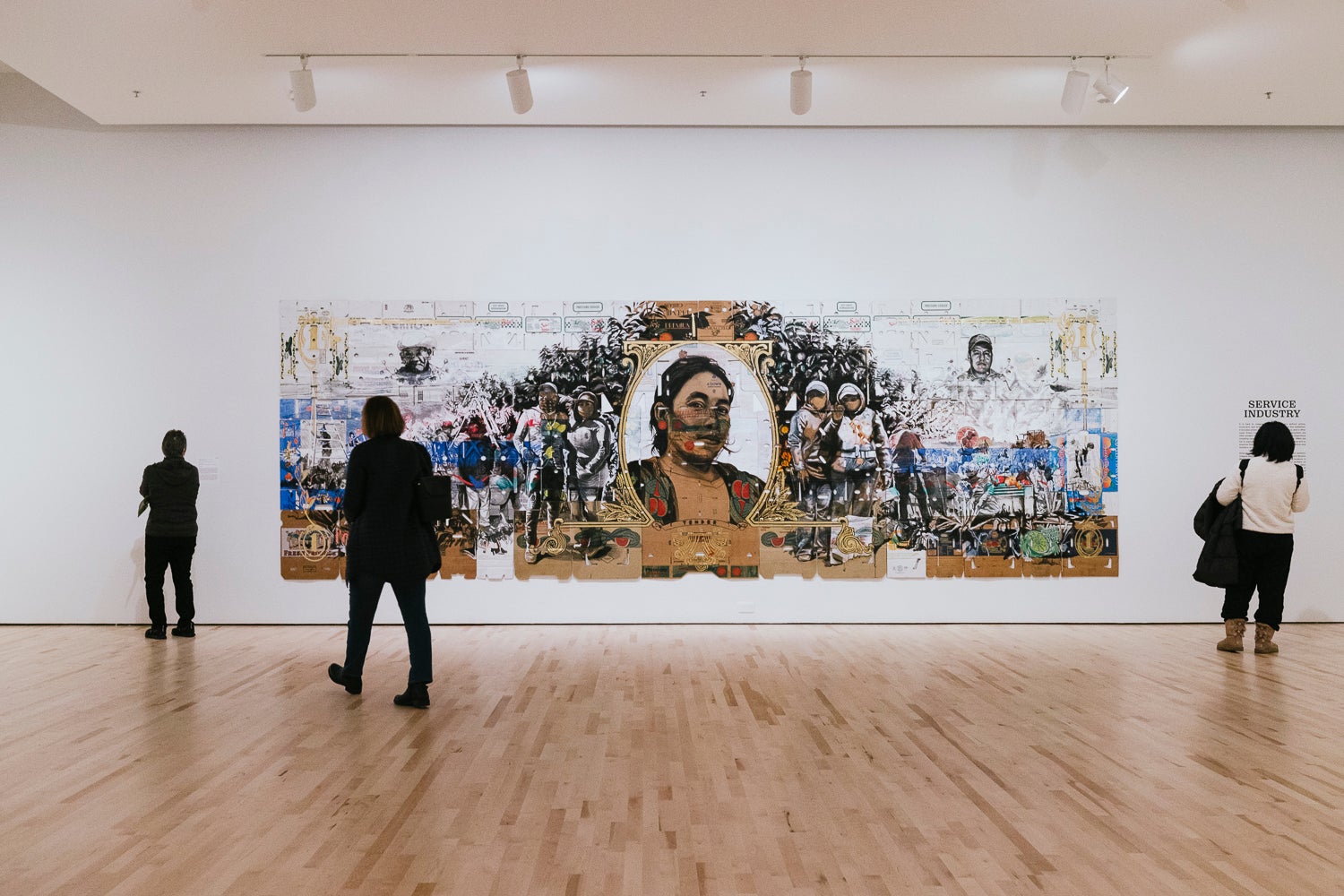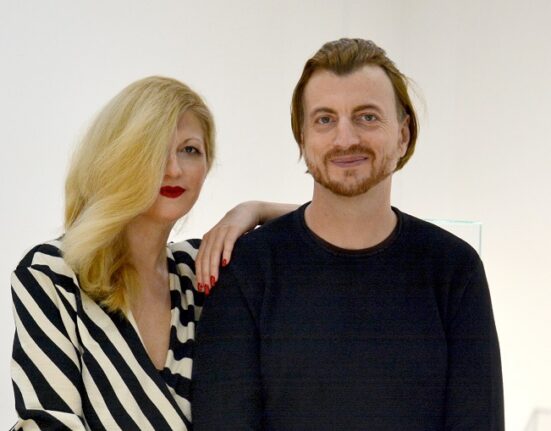
Day Jobs at the Cantor Arts Center explores the ways that artists incorporate everyday experiences and accidental discoveries from their day jobs into their artwork. (Image credit: Andrew Brodhead)
Newly opened Day Jobs at the Cantor Arts Center features more than 90 works by 36 established and emerging artists based in the United States whose day jobs dramatically altered their artistic trajectories in surprisingly profound ways. The large-scale multimedia exhibition is on view in four galleries on two museum floors through July 21, 2024.
“Day Jobs upends familiar narratives and myths around artists, challenging romanticized notions about how ideas are formed and what success looks like,” said Veronica Roberts, the John and Jill Freidenrich Director of the Cantor. Roberts co-curated the exhibit with Jorge Sibaja, curatorial assistant at the Cantor.
The Cantor is the second venue for Day Jobs. Roberts originated the exhibition at the Blanton Museum of Art at The University of Texas at Austin, where she was the curator of modern and contemporary art before coming to Stanford.
The expanded Cantor presentation features a more extensive selection of works by California-based artists such as Jim Campbell, Jay Lynn Gomez, Barbara Kruger, Ahree Lee, Narsiso Martinez, Sandy Rodriguez, and Stanford alum Margaret Kilgallen, MFA ’01. The exhibition catalog, edited by Roberts, features commissioned essays and interviews from 24 pioneering artists such as Larry Bell, Mark Bradford, Tishan Hsu, Howardena Pindell, and Julia Scher, who offer first-hand accounts of their day jobs as a frame shop technician, hair stylist, word processor, museum employee, and security systems installer, respectively.
“My hope is that this exhibition will help dispel the misguided myth of the solitary artist genius and make clear that much of what has determined the course of art history in the late 20th and 21st centuries are unanticipated, often accidental, discoveries brought about as much by pragmatic experiences as by dramatic epiphanies,” Roberts said. “I also hope it encourages us to more openly acknowledge the precarious and generative ways that economic and creative pursuits are intertwined.”
Conversations with artists over two decades sparked Roberts’ inspiration for the exhibition. Offhand comments about the importance of day jobs became a pattern, while institutions and art historical scholarship seemed to conspicuously disregard the relationship between artistic and economic labor. One of Roberts’ first conversations to this effect was with conceptual artist Sol LeWitt, who reflected on his time as a receptionist at The Museum of Modern Art as one of the most instructive experiences of his life. He remarked, “Knowing these people and talking to them was really more of an education than I ever got in art school.”
Further research by Roberts revealed that most artists based in the United States take on day jobs due to the high cost of living and modest government support for the arts. Success is often measured by their ability to quit a day job and focus full-time on creating art. Yet these day job positions, even if unrelated to an artist’s practice, are not always impediments to their careers. This exhibition reveals how day jobs can spur creative growth by providing artists with new materials and methods, hands-on knowledge of a specific industry that becomes an area of artistic investigation, or a predictable paycheck and structure that enable unpredictable ideas.
Day Jobs is organized loosely into seven sections that reflect the diverse industries represented by the artists: “Art World,” “Service Industry,” “Media and Advertising,” “Fashion and Design,” “Caregivers,” and “Finance, Technology, and Law.”
Since artist day jobs are not commonly discussed, Roberts solicited recommendations for the exhibition from nearly 100 curators, artists, and other colleagues in the field. Artists were selected based not only on the strength of their art but also on the extent to which their day job tangibly changed their practice. While the process for choosing artists occurred as part of the customary work of curatorial practice – informal studio visits and conversations, visiting residency programs, and encountering work in gallery and museum exhibitions as well as art fairs – notably, a third of the artists represented in Day Jobs were unfamiliar to Roberts when she began assembling the exhibition checklist roughly five years ago.
“The show is part of a larger ongoing interest on my part to take contemporary art out of its rarefied realm and into everyday life,” said Roberts. “The exhibition also supports the Cantor’s mission to serve as a vital site that connects art to a wider public.”
A major catalog available this summer will function both as an essential reader for the exhibition and as a standalone compilation of stories by many of the country’s most compelling artists, detailing the impact of their day jobs in their own words. Published by Santa Fe-based Radius Books, over 300 copies of the catalog will be distributed to community art centers and public libraries across the country via their donation program – further enhancing the educational reach of Day Jobs and its core ethos about how to support creative practices better.







